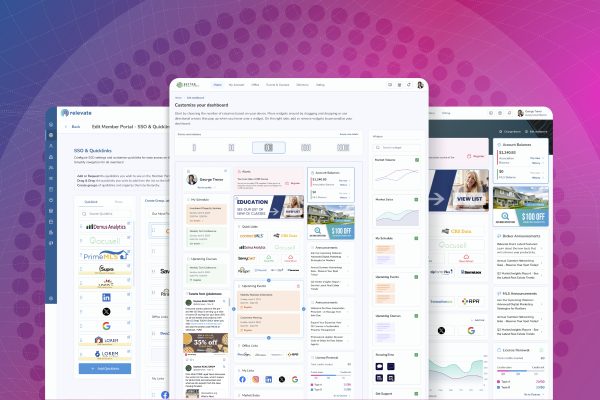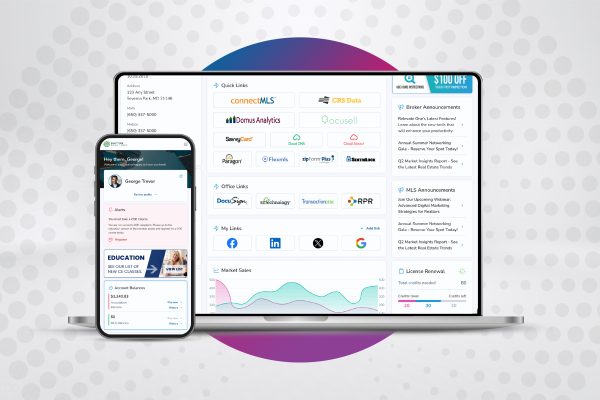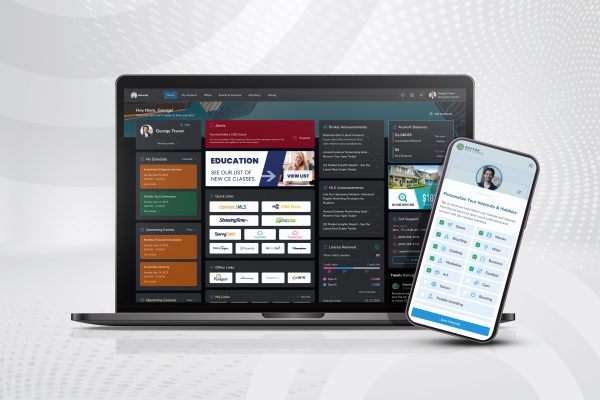The Cost of Doing Nothing: Why Associations Can’t Afford to Ignore Technology Upgrades
Think your association’s outdated tech is “good enough”? The true cost might surprise you.
We hear it all the time: “Our current system works… kind of.”
It’s an easy assumption to make when legacy systems still function well enough to get by. The processes might be inefficient, but they’re familiar. The workarounds might be tedious, but the staff knows them by heart. Change feels disruptive, so the decision to stay put often wins out. But the longer that choice persists, the more it costs.
Sticking with the status quo doesn’t just slow you down operationally. It chips away at staff morale, member engagement, and leadership confidence. Every manual process, delayed report, or frustrating user experience adds friction to the work your team does and the service your members receive. Over time, those moments of friction accumulate, holding your association back in ways that are hard to quantify but impossible to ignore.
At Relevate, we’ve seen firsthand what happens when “good enough” lingers too long. By the time many organizations realize it’s a problem, the damage is already done; missed opportunities, disengaged members, and a frustrated staff struggling to keep up with expectations that have outpaced the tools they’re given.
The good news is, it doesn’t have to be that way. A modern AMS can be a strategic shift that reclaims time, builds confidence, and creates room for growth, making the real question not whether your current system works, but if it’s working for the future you’re trying to build.
The Silent Costs of Standing Still
The upfront price of a new AMS is clear, it shows up as a line item on the budget. But the cost of keeping an old system is much harder to see or quantify. It shows up in slower processes, scattered data, and staff working twice as hard to get half as far, while repeating to newer team members the same, terrifying words: “this is the way things are.” These are the invisible drains on your association’s most vital resources:
1. Operational Bottlenecks & Productivity Drain:
The longer you live with disconnected systems, the more natural the inefficiencies start to feel. Workarounds become routine, the extra clicks and duplicate data entry just part of the day. But under the surface, that friction compounds. Every minute spent navigating a slow interface or reconciling data across systems is time diverted from more strategic work that could deepen member engagement or strengthen programs. Over time, those lost minutes turn into hours, and those hours add up to opportunities missed.
It’s not just about staff time, though. When your systems can’t communicate, your data becomes fragmented, locked away in silos that make it difficult to see the full picture of your membership. That makes it harder to plan, harder to personalize, and harder to lead with confidence. And without clear insights, decisions start to rely more on gut feel than on actual trends or needs.
Legacy systems slow you down, but that’s not all they do. They distort your view of the organization you’re trying to build. And that cost can seriously limit your growth long before it shows up in your budget.
2. Member Dissatisfaction & Eroding Loyalty:
We’ve all grown accustomed to technology that works in a certain way. Whether it’s shopping, streaming, or banking, the expectation is the same: fast, easy, intuitive. That expectation doesn’t stop when your members log into their association’s portal. If the experience feels unintuitive, confusing, or inconsistent, frustration starts to build; quietly at first, then more noticeably when engagement drops off.
Outdated systems turn simple tasks into unnecessary workarounds that waste your members’ time. Renewals aren’t as clear as they should be. Communications feel generic, lacking the personalization members have come to expect in every other part of their digital lives. Over time, the message that members receive (whether intentional or not) is that their experience isn’t a priority. And this is directly tied to how they perceive your association’s value in their minds, not with your AMS provider.
When that happens, loyalty starts to erode. Members become less likely to engage, less likely to participate, and eventually, less likely to renew. If accessing value feels like extra work, they’ll look for it elsewhere.
3. Missed Opportunities & Stifled Growth:
There’s no shortage of data inside your association. Every interaction, registration, and engagement holds valuable insight into who your members are, what they care about, and where they’re headed. But when your systems can’t bring that data together (member activity lives in one place, financial trends in another, and program participation somewhere else) it becomes nearly impossible to see the full picture.
Without that visibility, personalizing the member experience is more of a hope than a strategy. Planning new programs, expanding benefits, or generating non-dues revenue starts to feel like uneducated guesses rather than informed leadership. The data is there, but if your AMS can’t surface it in ways that actually inform action, you’re left flying blind while the needs of your members continue to evolve.
This is where growth stalls; not because the opportunities aren’t there, but because the clarity to pursue them isn’t. Associations that can’t easily access and act on their data fall behind. They move slower, respond later, and find themselves competing with organizations that have long since turned insights into strategy.
4. Security Risks & Compliance Headaches:
Security is often the last thing on the list, until it’s the only thing that matters. The truth is, legacy systems rarely keep pace with the escalating sophistication of cyber threats. Without routine updates, modern encryption, and built-in security protocols, outdated platforms quietly become easy targets for data breaches, ransomware, and unauthorized access.
At the same time, regulatory compliance has never been more complex. Data privacy laws continue to evolve, from GDPR and CCPA to an expanding web of state-specific regulations. For associations still operating on aging infrastructure, keeping up is as tedious as it is expensive. Manual audits, patchwork fixes, and makeshift workarounds strain resources that could be better spent on strategy and service.
The stakes are high. A data breach could potentially drain finances through legal fees and penalties, but it does more than that. It chips away at the trust you’ve built with your members, a loss that’s far harder to quantify and even harder to recover from. When member data is compromised, so is your reputation, and with it, your ability to grow, secure partnerships, or even maintain your current base.
The Ripple Effect: Why Inaction is the Most Expensive Choice
When you step back and tally the hidden costs, the true price of standing still becomes impossible to ignore. What feels like a temporary savings on upgrades is actually a slow, steady drain on your resources, your reputation, and your potential. Over time, it’s not just growth that suffers, but your association’s ability to adapt, compete, and lead in a fast-evolving landscape. In the long run, doing nothing doesn’t save you money; it costs you far more than you realize.
“Doing something costs something. Doing nothing costs something. And, quite often, doing nothing costs a lot more!” — Ben Feldman
A Modern AMS as a Strategic Investment
A modern AMS should be more than a software replacement, it should be the infrastructure that elevates every aspect of association operations. The purpose isn’t simply to update what already exists, but to create the conditions for better decisions, smoother workflows, and a more meaningful connection between the organization and its members.
That’s the vision behind Relevate One. By automating routine tasks and removing system redundancies, it creates space for staff to focus on priorities that actually move the organization forward. The hours once spent navigating slow processes and outdated tools are redirected toward member engagement, program development, and strategic planning—the kinds of efforts that shape an association’s future.
Members benefit from this shift as well. Instead of fragmented portals and frustrating navigation, they encounter an experience that feels cohesive, intuitive, and relevant to their needs. With easier access to tools, personalized resources, and clear pathways for engagement, participation becomes less of an effort and more of an expectation met.
For association leadership, this transformation is reinforced by data clarity. Relevate One offers built-in dashboards, real-time telemetry, and configurable reports that surface the information leaders need when they need it. This means fewer decisions based on assumptions and more based on actionable insights—a critical distinction in today’s competitive landscape.
And none of this would be sustainable without a firm commitment to security and compliance. The platform is designed to guard sensitive data and help associations navigate evolving privacy standards with confidence.
Empowering Your Future with an AMS Upgrade
Don’t let the hidden, compounding costs of outdated technology hold your association back from its full potential. A strategic investment in a modern AMS upgrade is not merely an expense; it’s a foundational investment in operational efficiency, unwavering member loyalty, and sustainable, future-proof growth. It’s time to stop guessing and start leading with data-driven confidence.
If your association is ready to move forward, Relevate One was built to help you get there.
[Book a demo] and let’s talk about what’s possible.
Related Posts

Unlocking the Power of Data: How AMS Solutions Can Drive Strategic Decisions

5 Key Benefits of Using Single Sign-On (SSO) in Your AMS

